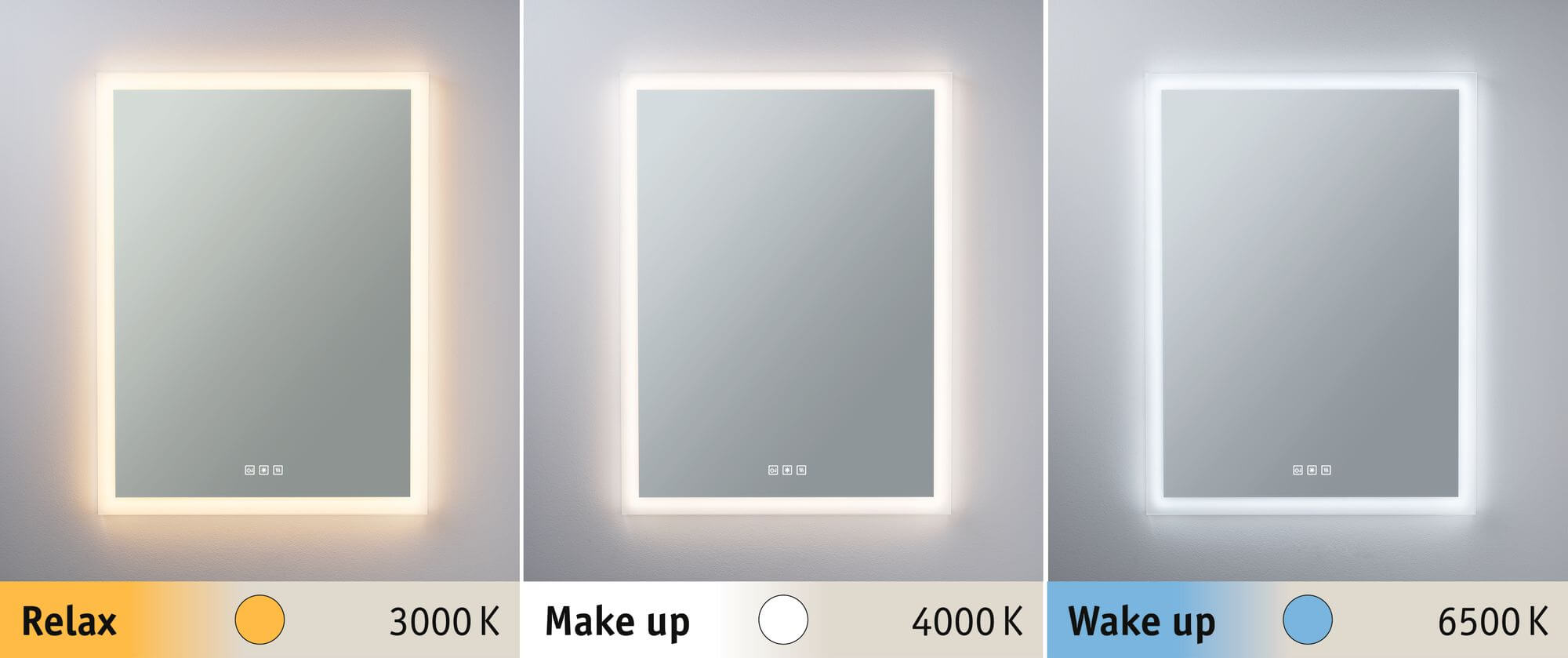-
What does 2700K, 3000K, 4000K mean – which color temperature should I choose? 11/12/2025 19:23:09How to Dim LED Lamps? An Expert's Guide 11/10/2025 17:59:57Track lights – a modern solution for any interior 10/30/2025 08:39:58What does 2700K, 3000K, 4000K mean – which color temperature should I choose?11/12/2025 19:23:09

What Do 2700K, 3000K, and 4000K Mean? How to Choose the Right Color Temperature
Discover what light color temperature really means and how to select the perfect tone for your living room, kitchen, or office. Learn the key differences between 2700K, 3000K, and 4000K — and see how each affects the atmosphere, comfort, and functionality of your interior.
Light Has Color — Literally
When choosing lamps for your home, we often focus on design, overlooking one of the most crucial factors that defines how a space feels: the color of light.
It determines whether a room will seem cozy and relaxing or cool and modern.Every light source comes with a color temperature rating, expressed in Kelvins (K) — for example, 2700K, 3000K, or 4000K.
These numbers describe the hue of the emitted light.The lower the Kelvin value, the warmer and more yellow the light — similar to candlelight.
The higher the value, the cooler and whiter the light — resembling daylight or a clear sky.What Exactly Is Color Temperature (K)?
Color temperature defines the visual tone of light — from warm (yellowish) to cool (bluish white).
The unit of measurement is the Kelvin (K).Temperature Description 2700K Warm yellow light 3000K Soft white with a slight warmth 4000K Neutral white light 6000K Cool, bluish daylight It’s important to note that this has nothing to do with the actual heat of the bulb.
Color temperature simply represents how our eyes perceive the light’s hue.
2700K – The Warm Glow of Home Comfort
Light at 2700K is the classic tone of traditional home lighting — the same gentle, golden glow that incandescent and halogen bulbs once produced.
It creates a soothing, intimate atmosphere and is ideal for spaces designed for relaxation, such as:-
Bedrooms
-
Living rooms
-
Restaurants, cafés, and hotel lounges
-
Reading and rest zones
This color temperature enhances beige tones, wood textures, and soft fabrics, adding a sense of warmth and familiarity.
Tip:
Use 2700K lighting in areas where you unwind in the evening — it promotes melatonin production and helps your body prepare for sleep.3000K – A Versatile, Soft White
3000K sits perfectly between warm and neutral light. It’s softly white — less yellow, yet not cold.
This makes it an excellent all-round choice for spaces such as:-
Kitchens
-
Dining areas
-
Hallways
-
Bathrooms with warm finishes
3000K light renders colors naturally while maintaining a welcoming atmosphere.
It’s bright enough for everyday tasks, but still comfortable for the eyes.Often referred to as “hotel white”, 3000K combines elegance and balance — ideal for achieving cohesive lighting throughout the home.
4000K – Neutral Daylight for Clarity and Focus
At 4000K, the light becomes clean, bright, and neutral — much like natural daylight.
It’s perfect for areas that require precision, visibility, and concentration:-
Home offices or study rooms
-
Bathrooms (especially around mirrors)
-
Kitchens — particularly work surfaces
-
Garages, wardrobes, workshops
4000K improves alertness and visual accuracy, reducing eye strain and fatigue.
Because it doesn’t distort colors, it’s often used in fashion stores, salons, and studios.Note:
In excessive amounts, 4000K lighting can feel “cold.” To balance it, combine with warmer accent lights — for instance, a 2700K lamp near the sofa.How to Choose the Right Color Temperature for Each Room
Room Recommended Temperature Visual Effect Living room / bedroom 2700–3000K Cozy, relaxing Kitchen / dining area 3000–4000K Bright, clean Bathroom / office 4000K Natural white, high visibility Hallway 3000–4000K Neutral, versatile Terrace / garden 3000K Pleasant and atmospheric A good rule of thumb is to layer different color temperatures in the same interior — warm for relaxation, neutral for function, and accent lighting for decoration.
Why Light Color Affects Mood and Wellbeing
Light has a direct impact on the human circadian rhythm — the natural cycle that regulates sleep and energy.
-
Warm light (2700–3000K) encourages relaxation and recovery.
-
Neutral light (4000K) supports daily activity.
-
Cool light (6000K) energizes and boosts focus.
Choosing the right color temperature for each activity ensures both comfort and performance.
An incorrect light tone can make interiors feel uncomfortable, harsh, or visually fatiguing.LED Technology – Flexible Color Control
Modern LED solutions often include CCT (Color Changing Temperature) functionality, allowing you to adjust the light tone — from warm 2700K to cool 6500K — via a switch, remote control, or mobile app.
This flexibility is ideal for multifunctional spaces.
For example, you can enjoy a cozy 2700K glow in your living room during the evening and switch to a bright 4000K tone during the day — all without changing the bulb.Summary – Which Color Temperature Should You Choose?
-
2700K – warm, relaxing light for rest and comfort
-
3000K – soft white for everyday living
-
4000K – bright, natural light for work and precision
In practice, the best results come from combining multiple color temperatures according to each area’s purpose.
Use 2700–3000K for cozy spaces like the living room, and 4000K for work surfaces or bathrooms to ensure both comfort and clarity.
Menu
- +Outdoor lighting
- +Indoor lighting
- Living room
- Bedroom
- Dining room
- LED bathroom lighting
- LED kitchen lighting
- LED stairs lighting
- +LED bulbs
- All manufacturers
- Prices drop
- New Products
- Bestseller




